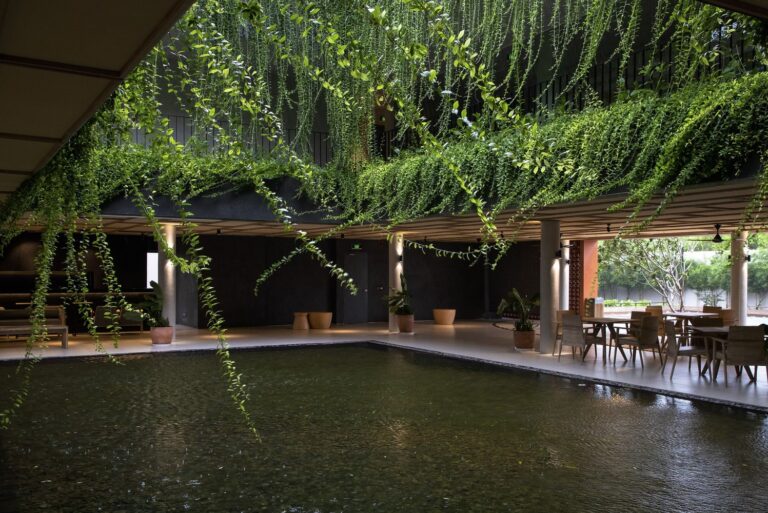
RHV Group Partners with Magic Horizons
Discover How Magic Horizons and RHV Group are Revolutionizing Mental Health, Stress Reduction, and Burn-out Prevention in the Workplace through Virtual Reality Experiences.

For decades, scientists, researchers, architects, and designers have been collaboratively exploring how to utilize the aspects of nature that most impact our relationship with the built environment. Many theorists organize biophilic design principles under three categories: nature in the space, nature of the space, and natural analogues, all of which determine a physical, visual, and emotional connection to the natural world. This framework, however, goes beyond materials, light, and ventilation, all of which are significant contributors to biophilic spaces. Effective biophilic design lets earth be the architecture itself, or at least a big part of it. And what seems to be often overlooked is that it is also locally-appropriate design, meaning that the architecture should not just blend with nature, it should blend with its nature – the specific surroundings of the project itself.
Take a look at how architects prioritized human wellbeing, and reinforced biophilia and the relationship between nature, human biology, and the built environment through 21 projects from our database.
RHV Group is a boutique interior design agency from Munich that provides sustainable interior design, implementation management, and new work consultation services to SMEs in D-A-CH.
In the past 10 years, they have worked with the leading high-end architects, designers, craftsmen, and furniture manufacturers in the home and office interior design industry. They have co-designed and co-decorated amazing spaces for Morphosys, IDnow, Microsoft, BMW, Celonis, Getty Images, and more.
Legal
RHV Group is a brand of RHV Real Estate GmbH, Munich.

Discover How Magic Horizons and RHV Group are Revolutionizing Mental Health, Stress Reduction, and Burn-out Prevention in the Workplace through Virtual Reality Experiences.

A significant highlight of the evening was the deep dive into the underestimated issue of #Stress. A powerful eye-opener, emphasizing the urgency of addressing this pressing concern in today’s fast-paced world.

workingwell and RHV Group Partner to promote mental health at the workplace

Discover 21 biophilic sustainable interior design that promotes wellbeing by incorporating natural elements in public spaces.

Creativity in design and cooking is one. January 2023 we hosted the ARCHICOOKING in Munich bringing together designers and architects to discuss latest trends.

The Insights Why Carbon Reduction Starts with Great Interior Design Interior design plays a critical role in shaping the spaces where we live, work, and
RHV Group
Typically replies within a hour
Thank you for reaching out, How can we help you today?
WhatsApp Us
🟢 Online | Privacy policy